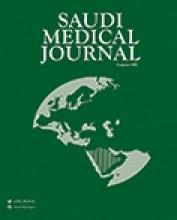Abstract
OBJECTIVE: To analyze the factors affecting survival of patients with chronic obstructive pulmonary disease (COPD) during the follow-up period using a 4-year prospective study.
METHODS: The study included 276 out-patients with COPD. The study took place in Ankara University, Cebeci Hospital, Ankara, Turkey between September 2000 and January 2005. We used cox proportional hazards model in investigating the effects of clinical variables on survival. Risk factors related with mortality were analyzed.
RESULTS: Forty-nine patients (17.8%) died and the mean survival time was 43.40 ± 0.65 months. The survival rates were 97% at one year, 89% at 2 years, 84% at 3 years, and 73% at 4 years. Cox proportional hazard model revealed that long-term mortality was significantly associated with age (relative risks [RR]: 1.13, 95% confidence interval: 1.09-1.17), the level of dyspnea (RR: 1.99, 95% confidence interval: 1.44-2.74), the number of hospital admission for acute exacerbation of COPD (RR: 1.33, 95% CI: 1.07-1.67) and the number of scheduled physician visits (RR: 0.75, 95% CI: 0.58-0.95). Also, the presence of hypoxemia was correlated with survival of COPD patients (RR: 0.99, 95% CI: 95-1.00).
CONCLUSION: Patient's age, level of dyspnea, hypoxemia and the number of hospital admission were more closely correlated with mortality in COPD. The regular follow-up patients increased the survival of this disease. According to this study patients with COPD may be followed in the specialized out-patient COPD clinics to decrease their morbidity and mortality rates.
- Copyright: © Saudi Medical Journal
This is an open-access article distributed under the terms of the Creative Commons Attribution-Noncommercial License (CC BY-NC), which permits unrestricted use, distribution, and reproduction in any medium, provided the original work is properly cited.






